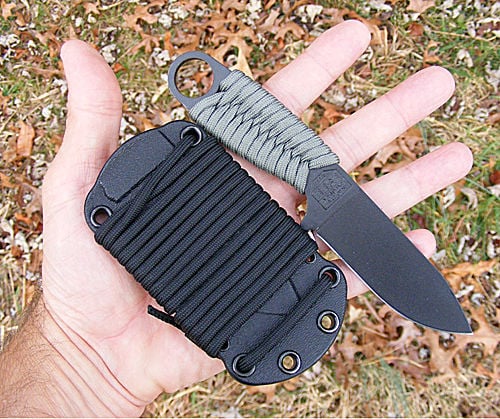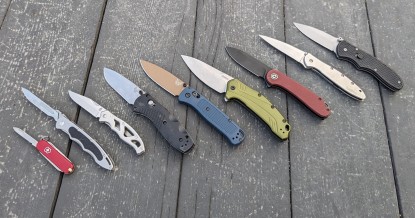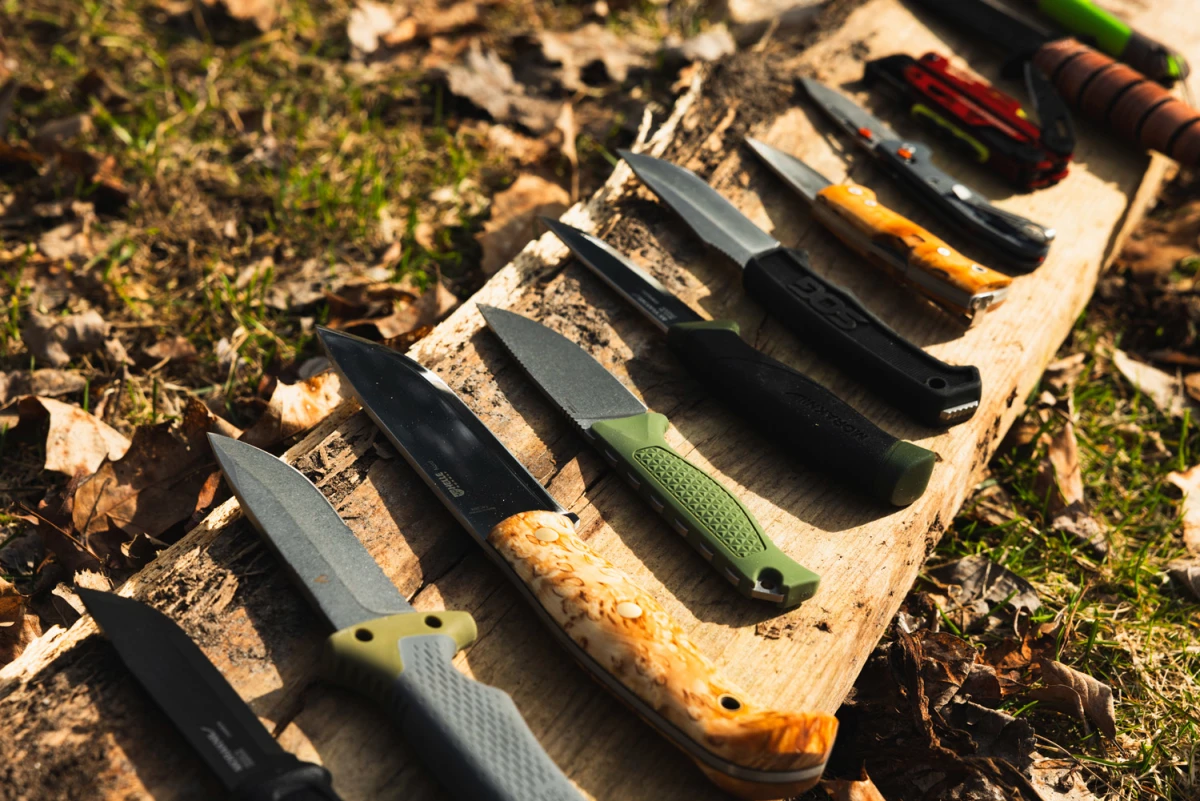Get It in Gear: Skeleton-framed outdoor knives, Sports

Like many popular innovations in outdoor gear, the first skeleton-framed survival and utility knife was probably a do-it-yourself project.The concept is simple.On most modern full-tang knives, the tang forms a perfect silhouette of the handle shape. A certain amount of metal is usually subtracted from the tang to lighten the overall weight of the knife without compromising strength of the handle. After removing a set of grip scales on a knife, somebody discovered a tool that was lighter and more compact. The frame handle could be wrapped with some kind of cordage for added comfort and improved grip. But it could still function if left bare. The larger the knife, the less practical this idea. A “skeletonized” Becker BK-9, for instance, would be pretty dumb. Conversely, skeleton frames tend to find their finest incarnations in smaller knives. Because of the light weight, these tend to be particularly well suited to neck lanyard carry. Arguably, two production knives most responsible for popularizing the trend are the Becker BK-11 (designed by Ethan Becker) and the ESEE Izula (designed by Randall’s Adventure & Training). Both designs have their respective avid followings.In recent years a collaborative project of the two makers has been produced in cooperation with KA-BAR — the BK-14, or “EsKaBar.” Basically, the BK-14 combines the sleeker handle design of the Izula with the slightly longer drop-point blade of the BK-11.The EsKaBar has an overall length of 7 inches, boasts a 3¼-inch-long blade and weighs 3 ounces. This doesn’t count the polymer sheath that is included with the knife. Earlier versions of the sheath earned a reputation for dulling the 1095 Cro-Van blades. The sheath that came with my example does not seem to cause this problem.While it can be worn as a neck knife, the EsKaBar sheath works well for comfortable everyday front-pocket carry. The rounded Izula-style handle won’t snag in a pocket like the BK-11 will. Being one piece, an EsKaBar is sturdier than most large pocket folding knives. The .165-inch-thick blade is stout enough to baton light kindling with, something that isn’t a great idea with most folders. Wrapping the handles with 550 parachute cord really does make the EsKaBar more comfortable to use for assorted bushcraft cutting strokes. Wrapping is also popular because it is a way to personalize one’s knife. There are different techniques of wrapping and virtually endless colors of cord from which to choose.One colleague objected that a downside of wrapping the handles with fabric cord is that these invariably absorb water, sweat, blood and pathogens with extended use. He has a point. A survival-utility knife is used for a lot of things. Avoiding cross-contamination and infection certainly is an intelligent concern. The good news is that whatever can be wrapped can be unwrapped. If your handle gets dirty, change it for fresh wrapping. The affordability of paracord is as appealing as its versatility. A thriftier move is to unwrap the handle before engaging in particularly messy work like cleaning fish, field-dressing or butchering. When you’re done, you can thoroughly clean, dry and oil the entire knife before re-wrapping the handle. For strict game prep, there are many blades I’d prefer to the EsKaBar. Then again, the BK-14 excels in a wider variety of everyday functions far better than most of my favorite hunting knives. It is a sturdy, basic and reliable outdoors tool.

KA-BAR Zk Acheron Skeleton Knife, Zombie 5

Gerber E-Z Out Skeleton, Fine Edge

Japanese Warrior Samurai Skull Kershaw Random Leek Framelock Deep Fiber Laser Engraving EDC Gear Complete Knife

Gordon 3 Blade Pocket Clip Knife Skeleton Frame Design 3cr13

Gerber Skeleton Frame Knive's – Bare Essentials

Best Pocket Knives of 2024

OUTDOOR EDGE Knives' RazorPro L Hunting Knife with

11 Best Survival Knives for Bushcraft & Outdoors, 2024

New knife day! How do you guys feel about Tops knives? : r/knifeclub